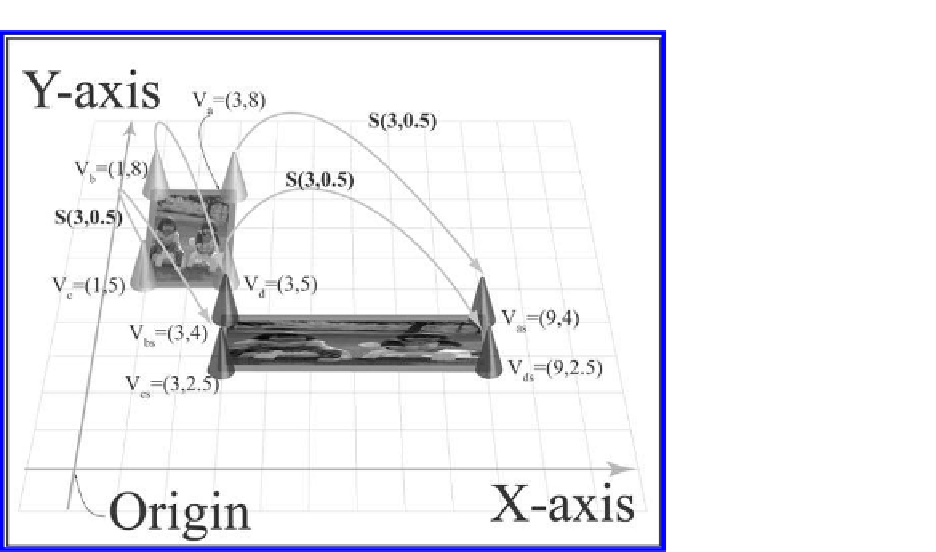Graphics Reference
In-Depth Information
Figure 8.8.
Applying the
S
(
3
,
0
.
5
)
operator on four points.
which results in
⎧
⎨
V
as
=(
9
,
4
)
,
V
bs
=(
3
,
4
)
,
Output points :
⎩
V
cs
=(
3
,
2
.
5
)
,
V
ds
=(
9
,
2
.
5
)
.
When we examine the size of the input and output rectangles, indeed we observe
the scaling of width (size in the
x
-direction) by a factor of 3, from 2 to 6, and the
scaling of height by a factor of 0
5. This scaling of dimension is true
in general, where we can apply the scaling operator to
resize
geometric shapes to
the desired dimension. In the case of Figure 8.8, one worrying observation is that
although the
S
.
5, from 3 to 1
.
(
3
,
0
.
5
)
operator has accomplished the desired/expected result of
resizing the 2
5 rectangle, the operator has also moved
the resulting rectangle in a counterintuitive manner. We note that the moving of
the scaled rectangle is the result of the repositioning of the points with respect to
the
x
-and
y
-axes, or scaling of
x
-and
y
-values based on their respective distances
measured from the
x
-and
y
-axis.
×
3 rectangle into a 6
×
1
.

















Search WWH ::

Custom Search